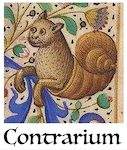Sweden. Day 20. Tiny houses.
The bird appeared again at my window this morning, but let’s forget about him for now. Today I want to talk about Swedish houses. I don’t know about Stockholm, Uppsala or other big cities, but around here in Björkö-Arholma most houses follow a similar pattern. Almost all are made of wood. And the colour is almost always red.
And it is not any red either. It is a special tone of dark red called “Faluröd”. Its origins lie in the city of Falun (thus the name) where there was a famous copper mine, and you could find large amounts of copper residue lying about. People would mix this waste with linseed oil and rye flour to paint their houses in a nice dark red colour, perhaps to imitate the brick houses of the upper classes, but on the cheap.
These days the copper waste is no longer used, but the Falun red still is, and a can of paint in this specific tone can be bought directly in the stores.
When the houses are not red, they are most likely yellow. Again, not any yellow, but a specific toned-down yellow, more or less the colour of yellow pea soup (ärtsoppa, in case you were wondering).
You can also find a few greyish-blue houses, and some made of simple varnished wood or logs — usually those houses have green window frames, which go well with the brown, simulating the colours of the forest. White is possible, but seems to be mostly reserved for public buildings such as churches or post offices. And that’s about it. I would say that, around here, 60% of the houses are Falu red, 30% are Ärtsoppa yellow, and 10% other colours, usually grey-blue, grey-white, or wood-brown.
You won’t find any bright colours. Fuchsia or ultramarine, forget it. I think Swedish authorities issue every year a limited number of Pantone colours that you are allowed to utilize. The most different house I could find was one painted in a sort of light salmon-pink colour, but I am sure must be illegal and the owner will soon be arrested by the police.
You also won’t find any weird modern-architecture shapes. Most are just old-fashioned houses that look like, well, houses. There are not many very old houses around here, or, if they are, they are well preserved. The former school where I am living and the church nearby were built in 1905 or 1906, but they could have been built yesterday as well, so well they match their surroundings, and so well kept they are.
In general, the houses are not fenced, so it is not always clear when one property ends and another begins. Many houses have decorative elements in their garden, even though, again, it’s not always clear when the garden ends and the forest begins and the lynx start to roam.
Another interesting feature of the houses around here is that many of them have tiny miniature houses on the back for children to play, usually in the same style and colour of the main house.
I still haven’t been invited inside any of the houses, so I can’t speak about their interior decoration, but they seem to be very cozy and warm inside. Perhaps one day I will have the chance to go inside; for now, I just spy them from outside through the windows, but today I didn’t realize an old woman was watching me from a window I was just about to photograph. I waved and pretended to be taking pictures of birds. I hope she didn’t call the police.
On the other hand, Swedish people do not seem to care too much about privacy. They’d rather have big windows to let in the light, than worry about someone peeping in. One of the houses I saw had basically had just one giant glass window covering almost the whole dining room, so you would be able to watch the family dining from the road (if there was anyone there, which there wasn’t). I think the bedroom, however, was probably more secluded.
Perhaps I will buy a house here one day, but for now, all I can afford is one of those tiny ones for children…









